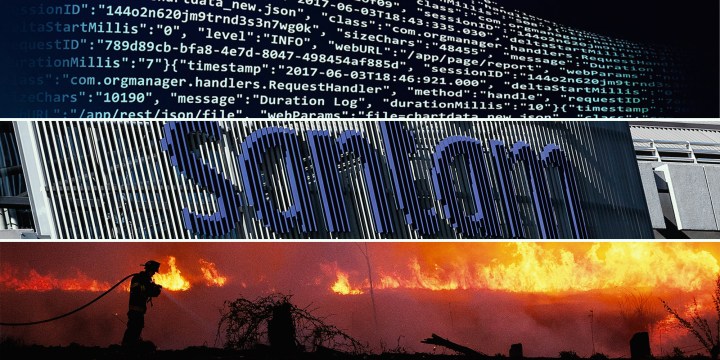COMPANIES
Santam turns to AI to help mitigate natural disaster risk

Taking the increasing impact of climate change seriously, the insurer now has a new tool at its disposal, which will give a clearer view of the risk profile of a particular property and help manage the risk.
With natural disasters taking an increasing toll on Santam’s bottom line, the country’s largest short-term insurer is turning to AI in the form of a geocoding initiative.
The new risk management underwriting tool, the Santam Underwriting Viewer, has been developed with geographic information systems (GIS) technology (also known as spatial intelligence). It overlays geocoded addresses with scientific data sets to determine the exposure to specific perils at a given location– allowing underwriters to view all the data layers they need to be aware of to apply appropriate policy conditions to a property.
In the 2023 financial year to the end of December 2023, floods in the Western Cape and hailstorms in Gauteng cost Santam R403-million and R180-million, respectively. Fire claims – a concern for the company – amounted to R422-million, up from R388-million the previous year.
“The geocoding tool allows us to pinpoint locations for every policyholder with home insurance, and we can then, for example, look at flood areas and identify which properties are prone to potential flooding. That means that from a risk management perspective, we can actually work with policyholders and come up with ways to manage that risk. That might mean increasing the excesses payable,” Santam’s chief risk officer, Charisse Ras, told Daily Maverick.
Mitigating the increasing effects of climate change has become a top priority for South African insurers, which have collectively paid billions of rands in related damages over the past five to 10 years. The increasing frequency and severity of severe weather events – such as heavy rainfall and resultant flooding – threatens the sustainability of insurers, which must protect the integrity of their balance sheets to continue paying claims for years to come. Harnessing the power of technology and geospatial data offers a solution to reducing this risk and ensuring the longevity of cover.
Santam has cause to be wary of this increased risk posed by natural hazards. The KwaZulu-Natal flooding in April 2022 was the largest single-flood loss event on Santam’s books in its 105-year history, with R4.3-billion paid in claims. Total losses were estimated at R54-billion, of which R27-billion were covered by the insurance sector. It resulted in R17-billion in damages to essential infrastructure in the province, causing major disruption. And two years later, the province is still recovering from the devastation.
It was the third significant severe weather event in KwaZulu-Natal in just four years with the previous major flood since the 1980s occurring in 2019 and before that, in 2017. Multiple other less severe, but still significant, floods occurred in other parts of the country that same year. Several floods in parts of the Eastern and Western Cape in 2023 also resulted in extreme losses.
Other actions Santam has taken to reduce risk include enhanced risk assessments, segmented premium increases, changes to excess amounts and increased security requirements for high-risk vehicles.
Policyholders had double-digit premium increases at the beginning of 2023 on the back of claims inflation. However, going into 2024, the expectation is single-digit premium increases across the board, Ras says.
High-risk, high-value vehicles, particularly in the north of the country, are now expected to have two tracking devices installed.
Commenting on the insurer’s results, group chief executive Tavaziva Madzinga said weak economic growth in South Africa and elevated levels of inflation and interest rates dented any prospects of a meaningful improvement in consumers’ disposable income. “We faced adverse weather and fire-related claims, exposure to the Türkiye earthquake losses and elevated claims inflation, among others. The cost of reinsurance has also increased substantially following the significant losses experienced globally and in the South African market since 2020,” he said.
Shareholders will receive a final dividend of 905c a share, bringing the cumulative dividends for the year to 3,180c. DM



















Comments - Please login in order to comment.